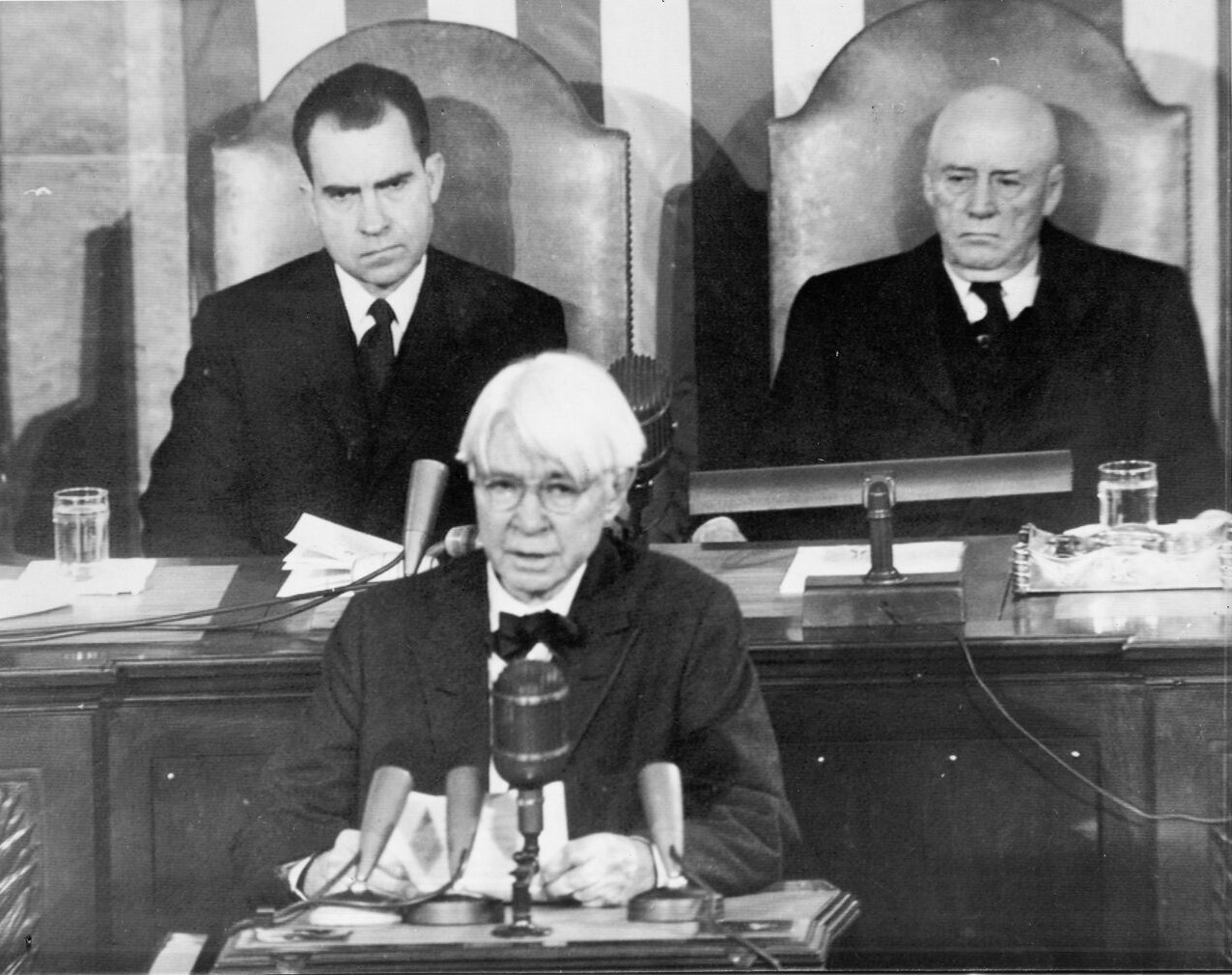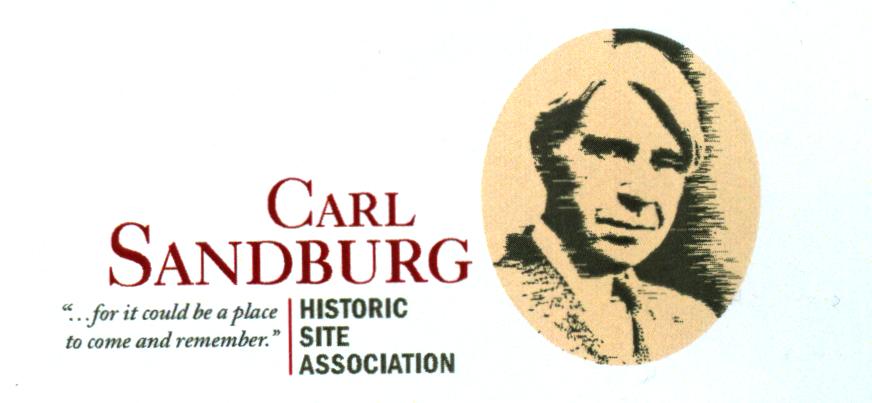|
________________________________________________________
#10 20 August 2024
Carl Sandburg addressing a joint session Congress, 12 February 1959. He is speaking from the rostrum of the House Chamber in 1959 with Richard Nixon and Sam Rayburn in the background. From the Carl Sandburg Collection of the University of Illinois Libraries Rare Book & Manuscript Library, University of Illinois at Urbana-Champaign. C448-006-073
Forty Years of Writing and Speaking about Abraham Lincoln
Not often in the story of mankind does a man arrive on earth who is both steel and velvet, who is as hard as rock and soft as drifting fog, who holds in his heart and mind the paradox of terrible storm and peace unspeakable and perfect.
By John W. Quinley
Dear Readers,, At the 150-year anniversary of Lincoln’s birth, Carl
Sandburg became the second private citizen to deliver a tribute to Congress. The
first was delivered after Lincoln’s assassination by historian George Bancroft.
House Speaker Sam Rayburn introduced Sandburg as “the man who in all probability
knows more about the life, the times, the hopes and the aspirations of Abraham
Lincoln than any other human being.” Radio and television networks broadcast all
or part of the address, which reached sixty million Americans. His words brought
tears to many. Sandburg wrote and spoke about Lincoln for more than
forty years. He published a book for children about Lincoln as a youth and a
two-volume and a four-volume set that spans Lincoln’s early life to his
assassination. These six books totaled more than 3,000 pages and nearly two
million words—more pages than are in the writings of William Shakespeare and all
the books of the Bible combined. Beyond that, he wrote one about Lincoln’s wife,
another about Oliver R. Barrett, a leading collector of Lincoln material, and
another about Frederick Hill Meserve’s seminal collection of Lincoln
photographs. Sandburg’s final book was a synthesis of his original six-volume
set, augmented by new material and research, into one volume. As a seasoned journalist and historian, Sandburg
checked all the angles of a story with multiple sources and wrote prose like an
investigative reporter. But as a poet, his narratives about Lincoln were
impressionistic:
The Pulitzer Prize Board in
1939 awarded Sandburg the history prize for
The War Years. The award led to his lecturing
in colleges and universities, frequent television and radio performances, and
columns about Lincoln, which were nationally syndicated. He spoke to a crowd of
more than twenty-five thousand people in Galesburg on the seventieth anniversary
of the Lincoln-Douglas debate there. He published an article “What Would Lincoln
Do Now?” in his World War II era book—the
Home Front Memo. With a nod to the conflicting
issues facing President Franklin D. Roosevelt in the lead-up to World War II,
Sandburg writes, “Lincoln now, if alive and effective, would often be doing the
expedient thing rather than the right thing. Otherwise, he would go down
politically and be swept out of use.” Sandburg looked out through Lincoln’s eyes, seeing the
world as Lincoln saw it, saying the things he would have said. He became the
literary embodiment of the Lincoln tradition. Professor Hazel Durnell wrote:
Thanks for reading,
John Quinley is the author of
Discovering Carl
Sandburg: The Eclectic Life of an American Icon and is a former docent at
the Carl Sandburg Home National Historic Site in Flat Rock, North Carolina.
|
|||||||||||||||||||||||||||||||||||||||


